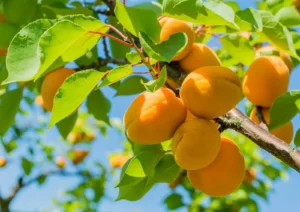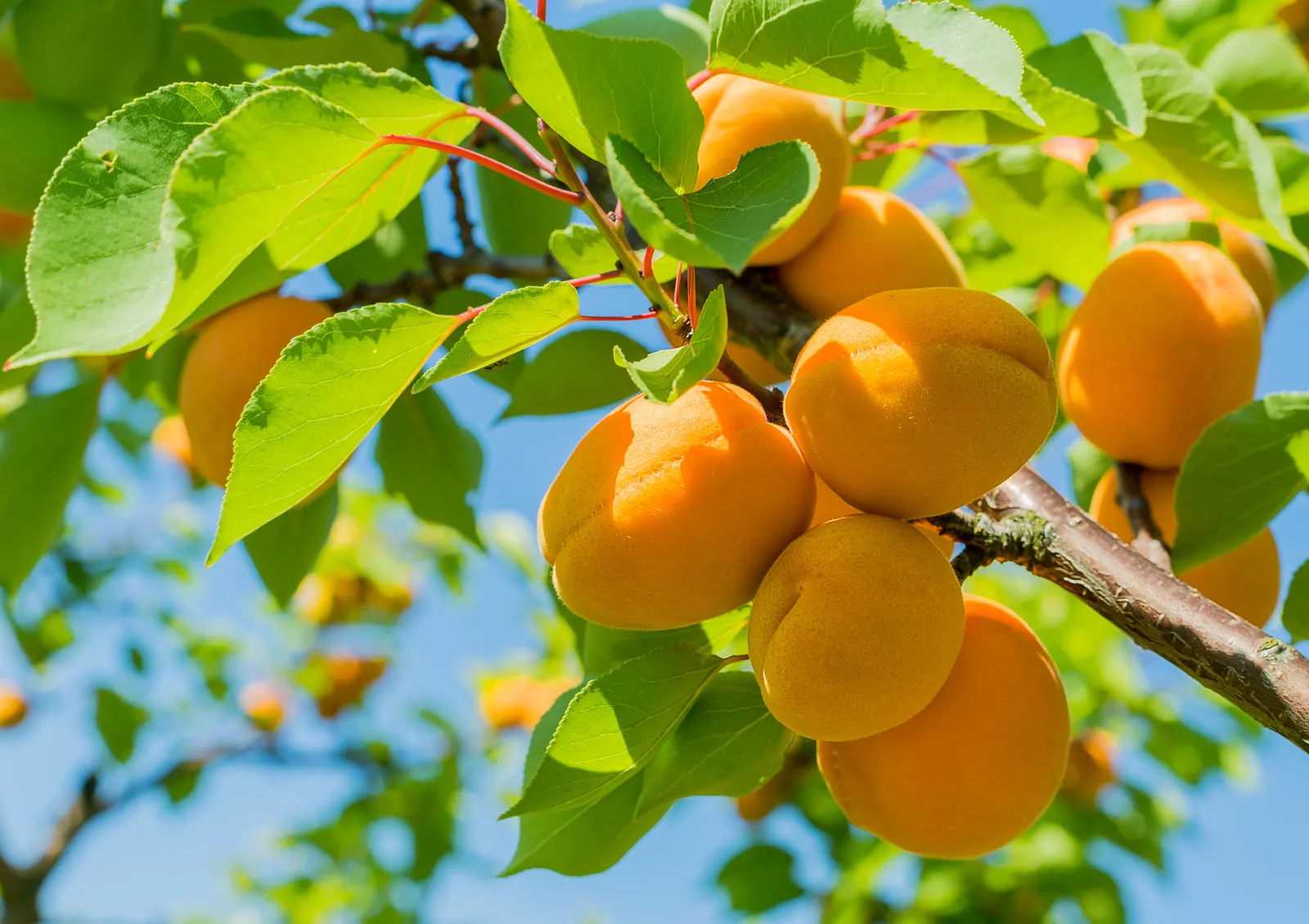What Is The Botanical Definition of A Fruit: Discovering the intricate design of nature and the interesting function fruits play in plant life by delving into the botanical definition of a fruit. According to botany, a fruit represents the conclusion of a plant’s reproductive process and serves as more than just a tasty pleasure. Beyond the area of cuisine, the botanical definition of a fruit explores the complex world of plant anatomy and reproduction. This investigation illuminates the various shapes that fruits can adopt, from succulent treats to protective capsules, each of which has a specific function within the realm of plants.
Quick Navigation
What Is The Botanical Definition of A Fruit
A thorough understanding of the complex relationship between pollinators, seeds, and the plant itself is necessary to comprehend the botanical definition of a fruit. Our understanding of the clever tactics plants use to maintain their survival and propagation deepens as we work to solve the puzzle of botanical classification. Therefore, understanding the botanical definition of a fruit opens the door to a greater understanding of the symbiotic interaction that exists between plants and their surroundings.

Botanical Definition of a Fruit
The reproductive process of plants is a complex symphony of biological activities, with the botanical definition of a fruit at its center. In botanical terms, fruits are the result of a plant’s reproductive efforts; they house and preserve seeds for future generations, far beyond what our taste buds can detect. Let’s explore the various forms and purposes that fruits fulfill within the plant kingdom as we delve into the intriguing realm of botanical definitions.
Clarifying the Phytochemical Essence
In essence, the reproductive structure of blooming plants is the basis of the botanical definition of a fruit. According to botany, a fruit is a flower’s fully developed ovary that results from successful pollination and fertilization. This definition covers a wide range of morphologies, demonstrating how adaptable nature is in preserving plant species.
Beyond Sugar: Varieties of Fruits
The definition of a fruit in botany, despite what the general public believes, goes well beyond the sweet, juicy variety that we serve on our tables. Botanical fruits appear in a rainbow of shapes and sizes, unlike apples, berries, and oranges, which conform to the traditional stereotype. Consider the avocado, a delicious and creamy fruit that defies conventional wisdom. Another example is the tomato, which is technically considered a fruit but is sometimes confused for a vegetable because it comes from the ovary of a flower.
Read Also: Paragon International University | Tuition, Ranking & Scholarships
The Reproduction Symphony of Botany
The function of a fruit in plant reproduction is fundamental to the botanical definition of a fruit. The process starts when male reproductive cells pierce the female ovule during flower pollination. When fertilization takes place, the ovary changes and becomes a fruit. The survival and propagation of plant species depend on the preservation and dissemination of seeds, which are ensured by this botanical process.
Edibility: Not a Botanical Standard, But a Culinary One
A frequent misperception is that all fruits are edible by definition in terms of botany. On the other hand, the botanical viewpoint emphasizes the reproductive function of fruits over their flavor. Although many fruits are tasty and healthy, some are not suited for ingestion, such as the deadly seed pod of the castor bean plant or the hard-shelled chestnut. This differentiation emphasizes how crucial it is to comprehend the botanical essence apart from culinary expectations.
Structure Versatility: Fleshy and Dry Types
According to the botanical definition, fruits have a wide range of structural variations. They fall into two general categories: meaty and dry. Nuts and capsules are examples of dry fruits with hardened coatings that shield seeds during distribution. However, the delicious pulp of fleshy fruits, such as melons and berries, attracts animals and promotes seed transportation to new areas. The adaptability of plant life is demonstrated by its structural versatility.
Examining Oddities in Botany: Flying Seeds and Explosive Fruits
A fruit’s botanical description reveals interesting adaptations that are not found in everyday life. Certain fruits have developed special systems that allow their seeds to spread to other areas. Think about samaras, the flying fruits of ash and maple trees that whizz across the sky like little helicopters. Fruits with explosive properties, such as touch-me-not plants, explode and release seeds, demonstrating how cleverly nature distributes seeds.

Human Agriculture and the Botanical Definition of a Fruit
The botanical concept of a fruit meets with human cultivation outside of the wild. Selective breeding is frequently used on cultivated types to improve desired features. The evolution of wild strawberries into larger, sweeter cultivars, for example, illustrates how people have changed the fruit’s natural essence to suit their gastronomic tastes. Agricultural operations are informed by an understanding of the botanical basis of fruits, which guarantees the continuing development of a variety of appealing and different types.
Dispersing Seeds to Preserve Biodiversity
The preservation of biodiversity is closely related to the botanical definition of a fruit. Fruits aid in the spread of seeds, which helps plant species survive in a variety of environments. Attracted by the tastes or nutritional value of the fruits, animals eat the fruits and scatter the seeds in various places, unintentionally aiding in the fruit’s dissemination. The interdependence of plants and animals in preserving the delicate balance of natural ecosystems is shown by this ecological dance.
Culinary Creativity Meets Botanical Definition
Although the botanical definition of a fruit sheds light on plant reproductive tactics, it also has connections to creative cooking. It’s common for chefs and food aficionados to conflate fruits and vegetables, adding avocados to savory dishes or tomatoes to salads. This culinary experiment bridges the gap between the culinary and botanical worlds by showcasing the adaptability of fruits beyond their conventional sweet applications.
A Greater Understanding of Plant Life
Discovering the fascinating world of diversity, adaptation, and reproductive wonders by delving into the botanical definition of a fruit. Beyond the well-known fruits that grace our tables, the botanical viewpoint deepens our comprehension of the plant kingdom. Acknowledging the diverse shapes and purposes that fruits represent leads to a more profound understanding of the complex dance of nature, in which every fruit is essential to the survival and continuation of its kind. The botanical definition of a fruit encourages us to appreciate the beauty of the plant kingdom in all of its forms and to be in awe of the genius of plant reproduction.
Read Also: What Are Holiday Cottages With Stunning Views
The botanical definition of a fruit is what?
The botanical definition of a fruit focuses on its ovary origin and its function in seed dissemination. This description includes a broad variety of structures, including less common ones like nuts and legumes as well as more common ones like apples and berries that are juicy. From a botanical perspective, a fruit is essentially the developed ovary of a blooming plant that contains seeds and is produced through fertilization and pollination.
In what ways does the botanical definition of a fruit vary from what is commonly understood in the culinary arts?
As a result of the inclusion of structures that are neither strictly sweet nor typically eaten as desserts, the botanical definition of a fruit may differ from popular culinary conceptions. Though most people identify fruits with sweetness, fruits actually come in a variety of shapes according to botany, including some with hard exterior shells or even those that we usually classify as vegetables, like tomatoes or bell peppers. Fruits are better understood from a botanical standpoint than just for their flavor and culinary applications.
By definition, are all fruits edible in the botanical sense?
The botanical definition of a fruit states that not all fruits are edible. Some fruits may be disagreeable or even poisonous, despite the fact that most fruits are delicious and constitute a substantial portion of our diet. Edibility is not a requirement; rather, the botanical definition concentrates on the fruit’s capacity for reproduction. As a result, a variety of fruits, some of which might not be fit for human eating, are included in the botanical definition.

What part in plant reproduction does the botanical definition of a fruit play?
The reproductive strategy of flowering plants is closely linked to the botanical definition of a fruit. The flower’s ovary transforms into a fruit during fertilization and pollination, shielding and feeding the seeds inside. This fruit facilitates the spread of seeds, which promotes plant reproduction and protects the genetic material within the fruit. Beyond their culinary or aesthetic value, fruits are important to plants’ life cycles, as the botanical viewpoint highlights.
From a botanical standpoint, may fruits have different shapes and sizes?
According to the botanical definition, fruits can display a remarkable range of forms and structures. The botanical viewpoint recognizes that fruits are more diverse than the traditional juicy or meaty types that are commonly associated with the term. It contains both unusual adaptations like samaras or winged fruits, as well as dry fruits like nuts and capsules. The broad range of adaptations that plants have developed to efficiently distribute their seeds are captured by the botanical definition.
How does our enjoyment of plant life benefit from knowing the botanical definition of a fruit?
Gaining insight into the botanical definition of a fruit can help one appreciate the intricacy and creativity of plant life on a deeper level. It reveals the complex reproduction mechanisms that plants have evolved over millions of years. Understanding the various shapes that fruits can take—from juicy berries to sturdy husks—helps us understand how plants maintain the viability of their species. With its emphasis on the delicate dance of nature, this botanical viewpoint inspires us to go under the surface of a fruit and develop a deep relationship with the plant life.
Recommended:
- Best University Cities for International Students
- Top 15 Best Universities in Europe for Business
- 7 Cheapest universities in Poland for international students
- How to open GIC for Canada in SBI, Scotiabank, and ICICI bank
The botanical definition of a fruit highlights the various forms and reproductive purposes of fruits, which deepens our understanding of plant life. It invites us to see beyond our typical culinary conception of fruits as merely delicious delights and instead to appreciate the complex systems that plants use for survival and reproduction. This botanical viewpoint deepens our connection to nature by enlarging our understanding of the plant life.
SEE ALSO:
Trust you found our article on What Is The Botanical Definition Of A Fruit. helpful. Follow our website for more interesting articles.

